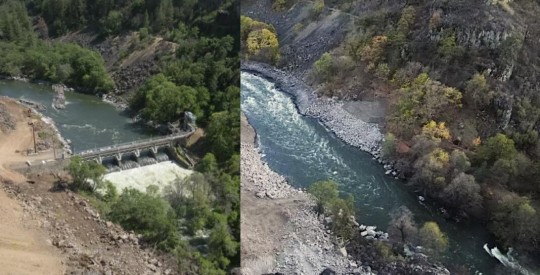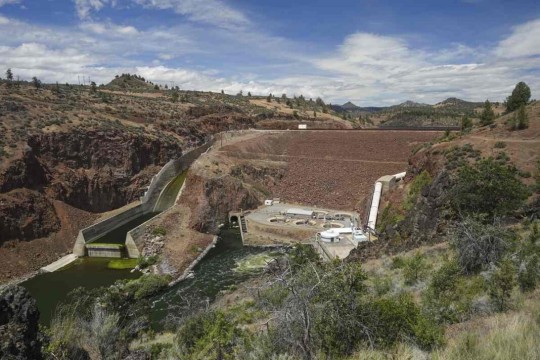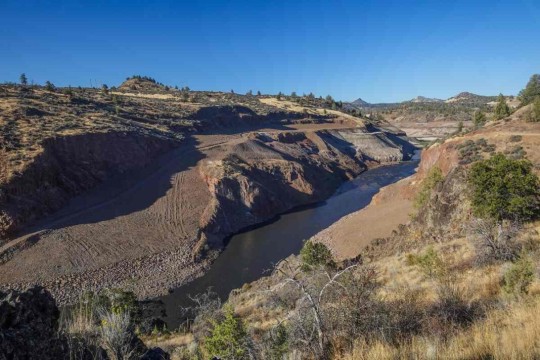#Dam
Explore tagged Tumblr posts
Text
Cove Island Timelapse 4:45-6:30am Thursday April 17th
(viacarad1016)
#photography#original photography on tumblr#originalphotographers#photographersontumblr#photographers on tumblr#original photography#iphone photography#iphone#iphonography#stamford#cove#morning#shoreline#watersedge#dam#originalphotography#photographer#photographers on instagram#photographers on lensblr#photgraphers on tumblr#cinematic video#time lapse#timelapse
35 notes
·
View notes
Text


Sunrise. 6:17 & 6:24 am. 45° F. April 17, 2025. Cove Island Park, Stamford, CT (@dkct25)
#daybreak#twilight#Cove Island Park#stamford#Original Photography#Photographers On Tumblr#holly pond#dam#sunrise#waterfalls
47 notes
·
View notes
Text
what did you say? *catches up to him so their walking next to eeachother, hands still intertwined*
Sirius had just dumped the last bag with the rest of his things in his room, having already said bye to Remus a while ago. He decided that unpacking was a later him problem and went to the living area to see what he could do to entertain himself.
……..
“James?!?”
He knocks on the door facing his own situated on the other side of the hall.
@chasingstarsjfp
64 notes
·
View notes
Text
"For years, California was slated to undertake the world’s largest dam removal project in order to free the Klamath River to flow as it had done for thousands of years.
Now, as the project nears completion, imagery is percolating out of Klamath showing the waterway’s dramatic transformation, and they are breathtaking to behold.

Pictured: Klamath River flows freely, after Copco-2 dam was removed in California.
Incredibly, the project has been nearly completed on schedule and under budget, and recently concluded with the removal of two dams, Iron Gate and Copco 1. Small “cofferdams” which helped divert water for the main dams’ construction, still need to be removed.
The river, along which salmon and trout had migrated and bred for centuries, can flow freely between Lake Ewauna in Klamath Falls, Oregon, to the Pacific Ocean for the first time since the dams were constructed between 1903 and 1962.
“This is a monumental achievement—not just for the Klamath River but for our entire state, nation, and planet,” Governor Gavin Newsom said in a statement. “By taking down these outdated dams, we are giving salmon and other species a chance to thrive once again, while also restoring an essential lifeline for tribal communities who have long depended on the health of the river.”
“We had a really incredible moment to share with tribes as we watched the final cofferdams be broken,” Ren Brownell, Klamath River Renewal Corp. public information officer, told SFGATE. “So we’ve officially returned the river to its historic channel at all the dam sites. But the work continues.”


Pictured: Iron Gate Dam, before and after.
“The dams that have divided the basin are now gone and the river is free,” Frankie Myers, vice chairman of the Yurok Tribe, said in a tribal news release from late August. “Our sacred duty to our children, our ancestors, and for ourselves, is to take care of the river, and today’s events represent a fulfillment of that obligation.”
The Yurok Tribe has lived along the Klamath River forever, and it was they who led the decades-long campaign to dismantle the dams.
At first the water was turbid, brown, murky, and filled with dead algae—discharges from riverside sediment deposits and reservoir drainage. However, Brownell said the water quality will improve over a short time span as the river normalizes.
“I think in September, we may have some Chinook salmon and steelhead moseying upstream and checking things out for the first time in over 60 years,” said Bob Pagliuco, a marine habitat resource specialist at the National Oceanic and Atmospheric Administration in July.


Pictured: JC Boyle Dam, before and after.
“Based on what I’ve seen and what I know these fish can do, I think they will start occupying these habitats immediately. There won’t be any great numbers at first, but within several generations—10 to 15 years—new populations will be established.”
Ironically, a news release from the NOAA states that the simplification of the Klamath River by way of the dams actually made it harder for salmon and steelhead to survive and adapt to climate change.
“When you simplify the habitat as we did with the dams, salmon can’t express the full range of their life-history diversity,” said NOAA Research Fisheries Biologist Tommy Williams.
“The Klamath watershed is very prone to disturbance. The environment throughout the historical range of Pacific salmon and steelhead is very dynamic. We have fires, floods, earthquakes, you name it. These fish not only deal with it well, it’s required for their survival by allowing the expression of the full range of their diversity. It challenges them. Through this, they develop this capacity to deal with environmental changes.”
-via Good News Network, October 9, 2024
#california#oregon#klamath river#dam#dam removal#yurok#first nations#indigenous activism#rivers#wildlife#biodiversity#salmon#rewilding#nature photography#ecosystems#good news#hope
6K notes
·
View notes
Text



Mudflow dam in Tyrnyauz, Kabardino-Balkaria. Destroyed by a heavy mudflow in 2000.
2K notes
·
View notes
Text






Brutalism on calm water. Wimbleball Lake Dam, Somerset.
Hasselblad X2D 30mm
Photographed by Freddie Ardley
#photographers on tumblr#landscape#photography#artists on tumblr#travel#nature#art#photographer#hasselblad#fog#lake#dam#hydro#horror#dark
848 notes
·
View notes
Text

243 notes
·
View notes
Text
*after a late campfire chat* Percy: It's past midnight, I should go to bed. Night, everybody. Nico: Good night. Rest in peace. Will: Will: Nico– you can't– Percy: *horrified pikachu face* Annabeth: *wheezing*
#percy jackson and the olympians#heroes of olympus#pjo hoo toa#pjo hoo toa tsats#pjo incorrect quotes#incorrect pjo quotes#hoo incorrect quotes#incorrect hoo quotes#solangelo incorrect quotes#incorrect solangelo quotes#percy jackson#nico di angelo#will solace#annabeth chase#nico di angelo is a little shit#that should be a tag#dam
364 notes
·
View notes
Text





Had to get this lil bit outta my head. time for my usual getting tf out of here 💃💃💃
I’ll link this one cause I meant to add it—===>
#Still no name#dam#oh well#Donnie#Kendra#coko doodles#rottmnt#tmnt#drawing#doodle#sketch#rise of the teenage mutant ninja turtles#teenage mutant ninja turtles
620 notes
·
View notes
Text

#cyberpunk aesthetic#cyberpunk art#retrowave#cyberpunk#futuristic city#hydroelectric power#hydroelectricity#cybercore#a e s t h e t i c#cityscape#dam#purple and blue#purple#purple aesthetic#water#canal#city#urban sprawl
80 notes
·
View notes
Text







Sunday Blues (again) on Cove Island
April 13th 5:00-5:30am
(viacarad1016)
#dam#photography#original photography on tumblr#originalphotographers#stamford#photographersontumblr#photographers on tumblr#cove#morning#original photography#shoreline#twighlight#twilight#morningnighttime#darkness#dark sky#cloud aesthetic#clouds coming#sky clouds
139 notes
·
View notes
Text



Foggy morning at Holly Pond Dam. 6:15 to 6:40 a.m. 45° F. March 31, 2025. Cove Island Park, Stamford, CT (@dkct25)
#daybreak#twilight#Cove Island Park#stamford#Original Photography#Photographers On Tumblr#dam#holly pond#waterfalls
630 notes
·
View notes
Text
Although dam removals have been happening since 1912, the vast majority have occurred since the mid-2010s, and they have picked up steam since the 2021 Bipartisan Infrastructure Law, which provided funding for such projects. To date, 806 Northeastern dams have come down, with hundreds more in the pipeline. Across the country, 2023 was a watershed year, with a total of 80 dam removals. Says Andrew Fisk, Northeast regional director of the nonprofit American Rivers, “The increasing intensity and frequency of storm events, and the dramatically reduced sizes of our migratory fish populations, are accelerating our efforts.”
Dam removals in the Northeast don’t generate the same media attention as massive takedowns on West Coast rivers, like the Klamath or the Elwha. That’s because most of these structures are comparatively miniscule, built in the 19th century to form ponds and to power grist, textile, paper, saw, and other types of mills as the region developed into an industrial powerhouse.
But as mills became defunct, their dams remained. They may be small to humans, but to the fish that can’t get past them “they’re just as big as a Klamath River dam,” says Maddie Feaster, habitat restoration project manager for the environmental organization Riverkeeper, based in Ossining, New York. From Maryland and Pennsylvania up to Maine, there are 31,213 inventoried dams, more than 4,000 of which sit within the 13,400-square-mile Hudson River watershed alone. For generations they’ve degraded habitat and altered downstream hydrology and sediment flows, creating warm, stagnant, low-oxygen pools that trigger algal blooms and favor invasive species. The dams inhibit fish passage, too, which is why the biologists at the mouth of the Saw Kill transported their glass eels past the first of three Saw Kill dams after counting them...
Jeremy Dietrich, an aquatic ecologist at the New York State Water Resources Institute, monitors dam sites both pre- and post-removal. Environments upstream of an intact dam, he explains, “are dominated by midges, aquatic worms, small crustaceans, organisms you typically might find in a pond.” In 2017 and 2018 assessments of recent Hudson River dam removals, some of which also included riverbank restorations to further enhance habitat for native species, he found improved water quality and more populous communities of beetles, mayflies, and caddisflies, which are “more sensitive to environmental perturbation, and thus used as bioindicators,” he says. “You have this big polarity of ecological conditions, because the barrier has severed the natural connectivity of the system. [After removal], we generally see streams recover to a point where we didn’t even know there was a dam there.”

Pictured: Quassaick Creek flows freely after the removal of the Strooks Felt Dam, Newburgh, New York.
American Rivers estimates that 85 percent of U.S. dams are unnecessary at best and pose risks to public safety at worst, should they collapse and flood downstream communities. The nonprofit has been involved with roughly 1,000 removals across the country, 38 of them since 2018. This effort was boosted by $800 million from the Bipartisan Infrastructure Law. But states will likely need to contribute more of their own funding should the Trump administration claw back unspent money, and organizations involved in dam removal are now scrambling to assess the potential impact to their work.
Enthusiasm for such projects is on the upswing among some dam owners — whether states, municipalities, or private landholders. Pennsylvania alone has taken out more than 390 dams since 1912 — 107 of them between 2015 and 2023 — none higher than 16 feet high. “Individual property owners [say] I own a dam, and my insurance company is telling me I have a liability,” says Fisk. Dams in disrepair may release toxic sediments that potentially threaten both human health and wildlife, and low-head dams, over which water flows continuously, churn up recirculating currents that trap and drown 50 people a year in the U.S.
Numerous studies show that dam removals improve aquatic fish passage, water quality, watershed resilience, and habitat for organisms up the food chain, from insects to otters and eagles. But removals aren’t straightforward. Federal grants, from the National Oceanic and Atmospheric Administration or the Fish and Wildlife Service, favor projects that benefit federally listed species and many river miles. But even the smallest, simplest projects range in cost from $100,000 to $3 million. To qualify for a grant, be it federal or state, an application “has to score well,” says Scott Cuppett, who leads the watershed team at the New York State Department of Environmental Conservation’s Hudson River Estuary Program, which collaborates with nonprofits like Riverkeeper to connect dam owners to technical assistance and money...

All this can be overwhelming for dam owners, which is why stakeholders hope additional research will help loosen up some of the requirements. In 2020, Yellen released a study in which he simulated the removal of the 1,702 dams in the lower Hudson watershed, attempting to determine how much sediment might be released if they came down. He found that “the vast majority of dams don’t really trap much sediment,” he says. That’s good news, since it means sediment released into the Hudson will neither permanently worsen water quality nor build up in places that would smother or otherwise harm underwater vegetation. And it shows that “you would not need to invest a huge amount of time or effort into a [costly] sediment management plan,” Yellen says. It’s “a day’s worth of excavator work to remove some concrete and rock, instead of months of trucking away sand and fill.” ...
On a sunny winter afternoon, Feaster, of Riverkeeper, stands in thick mud beside Quassaick Creek in Newburgh, New York. The Strooks Felt Dam, the first of seven municipally owned dams on the lower reaches of this 18-mile tributary, was demolished with state money in 2020. The second dam, called Holden, is slated to come down in late 2025. Feaster is showing a visitor the third, the Walsh Road Dam, whose removal has yet to be funded. “This was built into a floodplain,” she says, “and when it rains the dam overflows to flood a housing complex just around a bend in the creek.” ...
On the Quassaick, improvements are evident since the Strooks dam came out. American eel and juvenile blue crabs have already moved in. In fact, fish returns can sometimes be observed within minutes of opening a passageway. Says Schmidt, “We’ve had dammed rivers where you’ve been removing the project and when the last piece comes out a fish immediately storms past it.”
There is palpable impatience among environmentalists and dam owners to get even more removals going in the Northeast. To that end, collaborators are working to streamline the process. The Fish and Wildlife Service, for example, has formed an interagency fish passage task force with other federal agencies, including NOAA and FEMA, that have their own interests in dam removals. American Rivers is working with regional partners to develop priority lists of dams whose removals would provide the greatest environmental and safety benefits and open up the most river miles to the most important species. “We’re not going to remove all dams,” [Note: mostly for reasons dealing with invasive species management, etc.] says Schmidt. “But we can be really thoughtful and impactful with the ones that we do choose to remove.”
-via Yale Environment 360, February 4, 2025
#rivers#riparian#united states#north america#northeast#pennsylvania#massachusetts#new york#dam#dam removal#good news#hope
1K notes
·
View notes
Text

Dam, Kawakami, Nara Prefecture
5K notes
·
View notes
Text

Dam on the Maros river, Târgu Mureș, 1942. From the Budapest Municipal Photography Company archive.
75 notes
·
View notes

